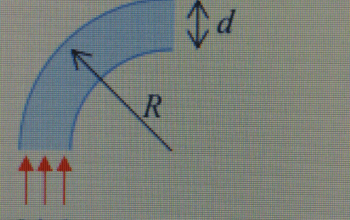The concept of cloaking devices has long captured the imagination of scientists, engineers, and the general public alike. Rooted in the realms of physics and advanced material science, this notion transcends simple fantastical elements, probing the boundaries of what is feasible in the manipulation of light and sound. The allure of these enigmatic devices, particularly when speaking of their transmutation into two-dimensional forms, cannot be overstated. Cylinders of silence may soon usher in a new epoch of technological innovation, as researchers increasingly develop materials capable of bending and guiding waves in ways that were once relegated to fiction.
The digital era is characterized by an explosion of information and an ongoing battle for privacy and surveillance avoidance. The human psyche is innately drawn to the dichotomy of visibility and invisibility. Cloaking devices embody this fascination. The appeal lies not merely in their practical applications—from military stealth technology to architectural design—but also in the metaphysical implications of rendering objects imperceptible. This duality elicits curiosity about the mechanisms that underlie such advanced phenomena.
In the past decade, significant strides have been made regarding the development of cloaking methodologies leveraging metamaterials—synthetic materials engineered to possess properties not typically found in nature. Researchers have discovered that such materials can control electromagnetic waves, allowing for the bending of light around an object, effectively rendering it invisible to the observer. However, recent explorations have pivoted toward the realization of two-dimensional cloaking. This novel domain presents unique challenges and opportunities that necessitate a comprehensive understanding of wave behavior and material composition.
Two-dimensional cloaking, specifically within the confines of a cylindrical framework, offers intriguing advantages. The cylindrical geometry simplifies the mathematical modeling of wave interactions, enabling researchers to simulate better and visualize the effects of cloaking. This approach capitalizes on principles such as transformation optics, which applies differential geometry to manipulate wave pathways irrespective of the spatial dimensions involved. Such a reduction in dimensional complexity broadens the spectrum of potential applications, particularly in fields like augmented reality and miniaturized communication devices.
Although cloaking technologies are often hailed for their revolutionary potential, they are also underscored by ethical considerations. The double-edged sword of invisibility becomes palpable in scenarios such as military applications, where the capacity to become undetectable may incite geopolitical tensions. Furthermore, one must contemplate the philosophical ramifications of invisibility, questioning the core tenets of perception and existence. What does it mean for an object—or by extension, an individual—to exist in a state of invisibility? This quintessential inquiry cannot be overlooked in the fervor to develop groundbreaking technologies.
Another interesting facet of cloaking devices is the relationship between the material properties and the desired outcome. In cylindrical cloaking, specific parameters dictate the design of the metamaterial. The selection of materials is not arbitrary; rather, it is meticulously aligned with the wavelengths intended to be manipulated. The exploration of natural materials with unique optical properties has emerged as an alternative route in the quest for effective cloaking devices. Integrating organic structures can not only reduce production costs but may also yield ecologically sustainable alternatives to traditional synthetic materials.
The dynamic between curiosity about invisibility and the ethical implications thereof fosters a rich tapestry of inquiry. Artists and philosophers have long pondered the aesthetics of the invisible. In contemporary dialogues, the notion of ‘seeing’ and ‘not seeing’ has particular resonance. The exploration of cloaking devices feeds into larger narratives within society—questions surrounding this intersection of technology and human experience raise pertinent discussions on surveillance, privacy, and autonomy. While cloaking devices may offer a singular technical achievement, they cannot be divorced from the complex socio-political landscapes they inhabit.
Moreover, as the field of cloaking technology advances, methodological innovations continue to emerge. Techniques such as acoustic cloaking and thermal invisibility represent expanding horizons. Focusing on acoustic waves, researchers have demonstrated the potential to redirect sound waves, creating zones of silence around objects. These advancements probe deeper questions regarding sensory perception. In an age where sound pollution is rampant, the promise of acoustic cloaking paves the way for an exploration of auditory environments that prioritize tranquility over noise.
In conclusion, the fascination surrounding cloaking devices—particularly cylindrical forms functioning in two dimensions—extends beyond mere technological marvel. It encapsulates profound scientific inquiry, ethical discourse, and philosophical musings about existence. The interplay between material science and the nature of perception raises pertinent questions that affect the trajectory of future innovations. Cloaking devices symbolize a yearning for control over one’s environment, a drive towards autonomy and privacy. As science continues to delve deeper into this realm, it is vital to remain vigilant about both the capabilities and consequences embedded within the evolution of invisibility.












